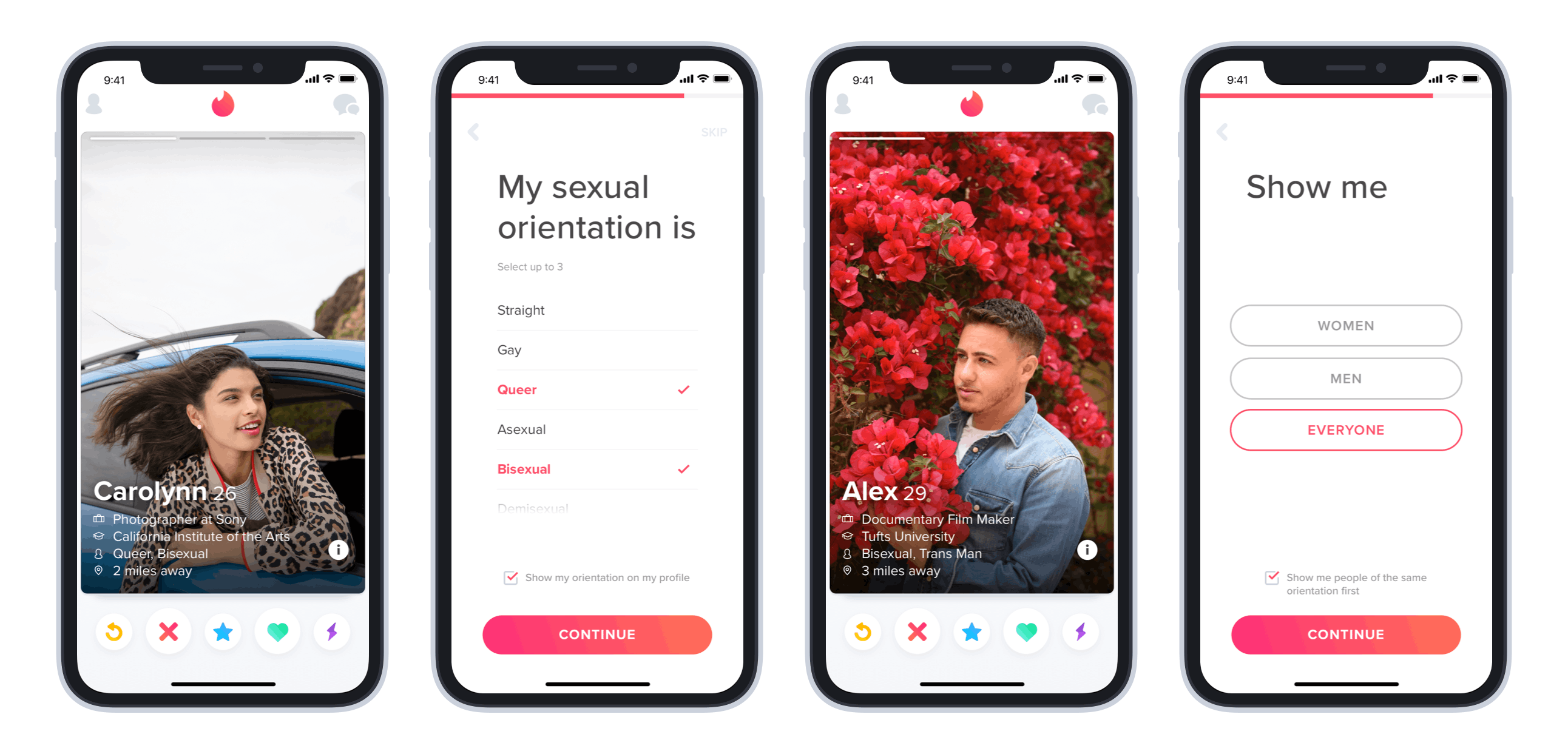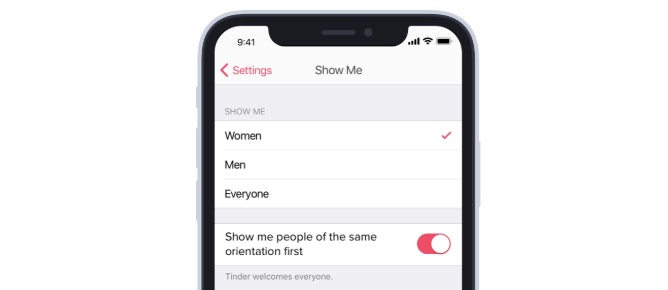Without a doubt, one of the most helpful features on Tinder is the ability to filter out your matches. What’s the use in swiping through men if you’re only interested in women? And why waste your time checking out cuties who live too far away for you to realistically date? But arguably, one of the most important factors that come into play with dating is your sexual orientation. If only you could express your orientation, while also knowing the orientation of your potential matches, right? Now you can, thanks to Tinder’s new Orientation feature, which launched on Tuesday, June 4 (just in time for Pride Month, FTW).
Sexual orientation is nuanced, and thankfully, Tinder now allows you to select up to three orientations from the nine possible options, which include straight, gay, lesbian, bisexual, asexual, demisexual, pansexual, queer, and questioning. Then, you get to choose whether or not you want to display that information openly on your profile. Either way, the orientations you select will guide the app’s algorithms in showing you matches that you may be more likely to swipe right on.
So, how does it work? If you’re already using Tinder, simply hit "Edit Info," select "Orientation," and add one to three terms that you identify with. Then, you’ll have the option to either display your orientation(s) or keep that info private. If you’re downloading the app for the first time, you’ll be prompted to include your orientation while setting up your profile. The best part? You can also change your discovery preferences to prioritize people of the same orientation.
As the conversation around sexuality broadens and society gradually begins embracing the idea of sexual fluidity, it’s high time for dating apps to encourage users to be fully and authentically themselves. And Tinder’s recent survey revealed that a whopping 60% of LGBTQ+ millennials would be interested in dating apps that make it easy to express their sexual orientation. By allowing users to express their orientation, Tinder could potentially increase the odds that those users snag quality matches with people they’re actually compatible with. Not only that, but according to Tinder’s survey, 64% of adults identify as LGBTQ+ online or in a closed group before formally coming out, and a staggering 78% admit that doing so gave them the confidence they needed to then formally come out offline. In other words, empowering people to express their orientation on a dating app could serve as a stepping stone to bravely acknowledging this aspect of their identity IRL.
And this isn’t the first time that Tinder made an effort on the inclusivity front, either. Back in 2016, Tinder overhauled its gender identity approach, which at the time, only allowed users to select “male” or “female.” The app partnered with GLAAD to add 37 additional gender options, including “transgender,” “trans man,” and “trans woman.” While users still aren’t able to identify their pronoun, orientation is a noteworthy step in the right direction. Before the roll-out of this feature, users were only able to select a preference for “men,” “women,” or “both,” — and now, they can be far more specific in what they’re looking for.
Now, when you spot a full-on snack in your queue, you can swipe to your heart’s content knowing that your orientation was taken into account. In the words of Tinder, #AllTypesAllSwipes — and that’s a hashtag I can get behind.
Source: Read Full Article

